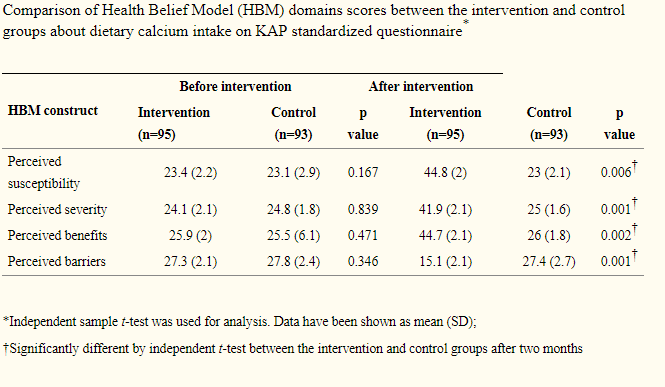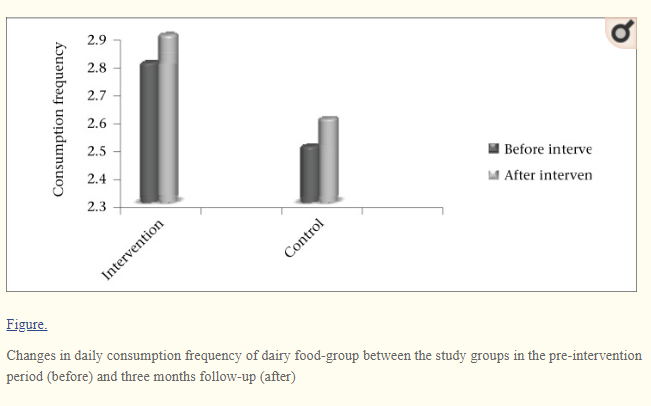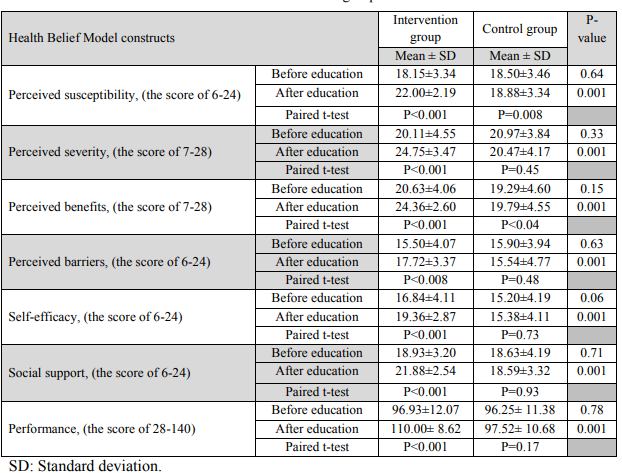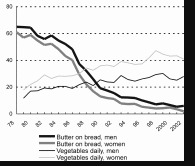Nutritional Behavior in Adolescence
| ✅ Paper Type: Free Essay | ✅ Subject: Nutrition |
| ✅ Wordcount: 2388 words | ✅ Published: 23 Sep 2019 |
Nutritional Behavior in Adolescence
- https://data.unicef.org/topic/adolescents/overview/.wH
- https://www.diabetesresearchclinicalpractice.com/article/S0168-8227(06)00426-8/fulltext
United States Department of Agriculture. A series of systematic reviews on the relationship between dietary patterns and health outcomes, 2014
https://www.nutrition.org.uk/nutritionscience/life/teenagers.html
https://academic.oup.com/eurpub/article/26/4/650/2467505
Cerin E, Barnett A, Baranowski T. Testing theories of dietary behavior change in youth using the mediating variable model with intervention programs. J Nutr Educ Behav. 2009;41(5):309–18.
Adolescent is the transition period between childhood and the adulthood – age range from 10-19 years where child undergoes emotional, physical and social changes, nearabout 16% of the world population is made up of adolescents. (UN, 2018).
Healthy dietary behavior and the lifestyle acquired during these stages may have a greater influence on their growth, health and wellbeing; high intake of sugary food, low consumption of fruits and vegetables, inadequate supplementation of iron, calcium are the cause which may have long term effect on the health of the individual which may result in obesity, nutrient deficiencies and chronic disease (Hoelscher et al., 2002). Over eating in childhood may lead to obesity, which is one of the important risk factors associated with type 2 diabetes in children. (Hussain et al, 2007). Some study conclude that the adequate intake of fruits and vegetables has linked with the reduction of risk of chronic disease like cardiovascular, cancer, and type 2 diabetes and obesity (PEM & Jeewoon, 2015; USDA 2014). Inadequate intake of fruits and vegetable may also lead to vitamin and mineral deficiency whilst the calcium and iron intake in body has helped in the preventing the osteoporosis and iron deficiency anemia. Low fiber diet in body has seen a direct relationship to the bowel cancer. (Ferguson, 2005).As, Children and youth spend most of their time in school and consumption of fast food in school is seen much higher- as the study on the British secondary school children reveals one fifth of the school children consume the junk food and drinks during their breakfast and lunch time (Zahra et al., 2014).Where, more than 90% of school have vending machines which make available of the sugary drinks in High school and middle school. (Gordon et al 2007b).
Health theories is mostly used in behavioral changes as it helps to understand the dietary behaviors and develop the necessary intervention strategies for it (Cerin et al., 2009). Health belief model is one of the common methods used to understand the health behavior in the population using the concepts of perceived susceptibility, severity, perceived benefits and barriers, cues to action, and self-efficacy. (Hochbaum, 1958; Rosenstock, 1974). The use of health behavior framework in nutrition behavior has shown the significant change in the attitude, knowledge and behavior of the nutritional intake. For e.g. The study conducted on the 188 female students shows the change in attitude and behavior (intake of diary product) at intervention group by the application of HBM model as shown in Table (1) (Naghaspour et al., 2014). Likewise, similar finding of change in knowledge and behavior was seen on study conducted on sixth-grade primary school, as the children were provided the training to change the behavior as shown in (Table 2) (Fathi et al., 2017). The results from these study evident that the students perceived barrier related to, unhealthy diet and junk food has decreased and perceived susceptibility has increased where the other cross-sectional study which was carried among the 500 high-school students between male and female students to understand the predictors of the dietary behavior shows the significant association between healthy eating pattern and perceived self-efficacy and barriers by using the model framework (Arash et al., 2016).
Nutrition education can be delivered around different settings- mainly aims to deliver the information through conduction of campaigns, providing the skills required for the individual to promote healthy diet and to prevent from nutritional related disease and providing the environment for safe and nutritious food (Contento, 2011). In Global Strategy on Diet, Physical Activity and Health the sustainable environment is necessary for good health of individual, community, nationals and global levels and government has a stewardship role in implementing the policy and strategy to address the nutrition problems (WHO, 2004).
Food-Based Dietary Guidelines (FBDGs) is a strategy implemented for the benefit of the individual and the community which provides the guidelines of healthy diet in understandable manner in the form of pictorial form i.e. food guide pyramid (Table 4) to deliver the healthy eating message (FAO,1997). The guideline of National Food Guide Pyramid has been implemented in 76 countries out of 126 deliver the messages of healthy eating were nearabout 90 percent guidelines where few guidelines are age specific and provides the message of social and behavioral change i.e. ‘enjoy your meals’, add variety of food in your diet including fish and vegetable, milk and fish consumption (Metab, 2007). The Study on the food pyramid contribution in different countries like: Australia, France, and Denmark and the USA has shown the positive effects in limitation of the sweet and fats and, where the intake of iron and vitamin D, vegetables and fruits and drinking of fortified milk was seen higher in youth (Auestad, 2015). In South Africa and Chile, the guidelines are broadcasted through the national or health networks to promote the good health. 15 Asian countries have implemented the dietary guidelines (FAO, 2018); where the India use the poster, brochure of leaflet to spread the message (Krishnaswamy, 2008); Thailand Food dietary guidelines has more than nine recommendation for the ages above 6 years (MOPH, 1988) where Philippines has also specific age group message related to dietary guideline (FNRI, 2015). In China, the Philippines and Thailand the increase in knowledge and understanding of diet and health was notice after the implementation of FBDGs in (Brown et al., 2011; Tanchoco, 2011; Sirichakwal et al., 2011).
Mass media campaign is the approaches targeted to the large population to change the health behavior where media and technologies like radio, newspapers, Tv, poster are popularly used to deliver the message (Wakefield et. al 2005). Media campaign related to increase in intake of fruits and vegetables, fat free or low-fat milk and access to healthy food can be targeted to the adolescents using information and communication technologies such as emails, different games or messages (Webb et al., 2017). The Pew Research Center, reported that the 92% of the American teens are easily access to internet where the 88% and are regular user of the electronic gadgets like: mobile, laptop etc (Lenhert, 2014). Pacific Obesity Prevention in Communities project conducted a mass campaign in Tonga, through tv, radio, poster to deliver the message to the adolescents related to the obesity and Nutrition (Fotu et al., 2011a). Through Television progrmmes like animation, related to nutrition behavior can also influence teen to change the behavior and attitude e.g. in Bangladesh, Nepal, India Meena cartoons are used as the communication. Though newspaper is less common in adolescents which is replaced by the internet and TV still few countries provide the information to the public e.g. In Fiji, weekly information of nutrition and diet is published on newspaper. of (Swodon, 2012). IN China, “WHO/China School Nutrition Project is one of the health promotion curriculums launched on school to increase the health of the student. While, a study in adolescents in school shows the nutritional intervention had improve their knowledge on the consumption of sweet drink may result to chronic disease where intake of fruits and vegetables keeps them healthy and weight management (Singhal et al., 2010). Similarly, in Nepal the government has implemented the awareness of iron deficiency campaign to raise the awareness (NHSP, 2004).
Despite the conduction of food dietary guidelines and mass media campaign still there is a threat of chronic disease; Many critics state the Dietary Guidelines 2015-2020 lacks the message of consumption of sodas and sugary and processed meat lead to chronic diseases. Likewise, the inappropriate eating habits is seen in the young people from high-, middle-, and low-income countries which has shown the negative effect of food pyramid. National diet and Nutrition Survey (2014) reveal in spite of getting the proper dietary guideline the intake of dietary fiber is only 15g/day in adolescents. Few studies done on the effectiveness on the FBDGs campaign has evaluated the campaign has the minimal effect on the diet (Brown et al., 2011, Keller and Lang, 2008)
The policy are implemented to promote the healthier lifestyle choices so the consumer can be accessible to the right to information, choice, equity and distributive fairness and confidentiality in the product( Daniels, 1985).The Product information is one of the policy such been implemented by government in order to reduce the chronic disease and promote good and healthy eating to the individual. Nutrition labelling is a way of providing information about the nutrient content of foods through the graphical label or by the nutrient list in the product to the consumer. According to Patient Protection and Affordable Care Act (2010) In US, calorie labelling was must in restaurant food menu and vending machine as the calorie requirement varies as the age of the children i.e. from 9-13 yrs. need 1,400- 2,000 calories per day. While in UK, Traffic light color used is used to determine the risk of level- “low (green)”, “moderate (yellow)2”, or “high (red)” of sugar, sodium and fat contained in it so that the understandable message is conveyed to the people for healthy eating (Triggle, 2015) where, Canada, Argentina, Brazil, Paraguay, Uruguay, Hong Kong SAR, Malaysia and Thailand have already started the labelling in the food. (Hawkes, 2010b). In Australia, the food label should also indicate the type of allergen including the nutrient value of product . The study on the effectiveness of nutrition labelling on health state it one of the effective measures to make the healthy choices in selection of food (Viola, 2015). While in some studies evidence has found out the dietary fiber intake and label has positive relationship (Capacci et al., 2012). Despite, the people having the labelling knowledge they try less to involve in it because of the time to see the label where the socio- economic factor such as low income, education can also impact the food choices on labelling (Walters & Long, 2012). The Educational site and workplace are the better settings to target in reduction of junk food and increase the intake of fresh food. As, the Government has implemented the free meal or low-cost plan in school days to increase the intake of fruits and vegetables and decrease the use of junk food so every child is access to healthy nutritious diet. Few developed countries like US, Canada, Mexico, Europe, and New Zealand (R et al.,2018) have adopted the plan while the countries like while the UK school law by banning the packed food and replacing with the whole grain meal.6 https://www.fstjournal.org/features/29-1/nutritional-behaviour .A .A study on the student preference on diet reveals children eating lunch in school consume more fruits and vegetable and prefer healthy snacks over the unhealthy snacks where Proper environment is necessary for the choice of healthy diet. (Gosliner et al., 2011). Where, the study conducted in school suggest that Traffic light policy should be taught on the school curriculum as a health education programme (Pettigrew et al., 2011)
Food ethics is a behavior of manufacturers, consumer and officials that is applied in food ethics whose major concern is no harm should be done to the physical, cultural and social environments of the consumer (Mepham, 2000). lack of knowledge and it should be able to by minimize the fiscal problems, side effects and risk caused to the individual. .
The EU law on pre-packaged foods says that if 95% of the ingredients in a packet are produced organically then you can label it organic
The Healthy eating intervention programme implemented in school has provided the nutrient rich food to the students giving the adequate diet to the students. other study states the school intervention are pursuing the children which might discouraged children in healthy eating therefore, the self-motivation is necessary to make the change in existing values (Kass et al., 2014).
“Social marketing is a commercial marketing technique used to plan and implement, and evaluate programs designed to bring about change in health or social behaviors”. ICT is a cost effective approach, in nutritional health project, which helps students to get update about the nutrition, diet and healthy habits to promote the health (Räihä, 2012 ).Meanwhile in UK, advertising the health diet through websites and tv is done by introducing Change4 life campaign which consist of number of tips for the teen and child for the diet improvements and physical activity by using the slogan of ”eat well, move more, live longer”(Department of Health, 2015)). The study conducted on youths using the Social marketing as an education program, to increase the intake of nutritious food, fruits and vegetables, and saturated fat, reveals as one of the necessary information technologies to improve the health, social, and environmental behaviors (Snow & benedict, 2003). Similarly, a study on the systematic review of ICT on five studies shows a significant outcome on the nutrient intervention on the teen’s exposure (Melo et al., 2017).). The review of educational programs conducted in school for promoting the healthy dietary behavior states the use of game is one of the motivating factors for increasing the healthy behavior. [Pérez López, 2015). While, other study where 228 children were participated reveals the experimental children participating in online games has shown the effective and entertaining educative learning to improve the nutritional knowledge (RM et al., 2013).
.
Annex
Fig 1


Fig 2

Fig 3:

Fige 3


Refrences
9. Hochbaum GM. Public participation in medical screening programs; a socio-psychological study. Washington, DC: Public Health Service, U.S. Government Printing Office, 1958:10-21. (Public Health Service publication no. 572).
10. Rosenstock IM. Historical origins of the health belief model. Health Educ Monogr. 1974. pp. 328–35.
11. Rosenstock IM, Kirscht JP. The health belief model and personal health behavior. Health Educ Monogr. 1974;2:470–3
Janz NK, Champion VL, Strecher VJ. The health belief model. In: Glanz K, Rimer BK, Lewis FM, editors. Health behavior and health education: theory, research, and practice. San Francisco, CA: Jossey-Bass; 2002. pp. 45–66.
14. Spikmans FJM, Brug J, Doven MMB, Kruizenga HM, Hofsteenge GH, van Bokhorst-van der Schueren MAE. Why do diabetic patients not attend appointments with their dietitian? J Hum Nutr Diet. 2003;16:151–8. [PubMed]
Becker The health belief model and personal health behavior. Health Educ Monogr. 1974;2:324–508.
Cite This Work
To export a reference to this article please select a referencing stye below:
Related Services
View allDMCA / Removal Request
If you are the original writer of this essay and no longer wish to have your work published on UKEssays.com then please click the following link to email our support team:
Request essay removal



